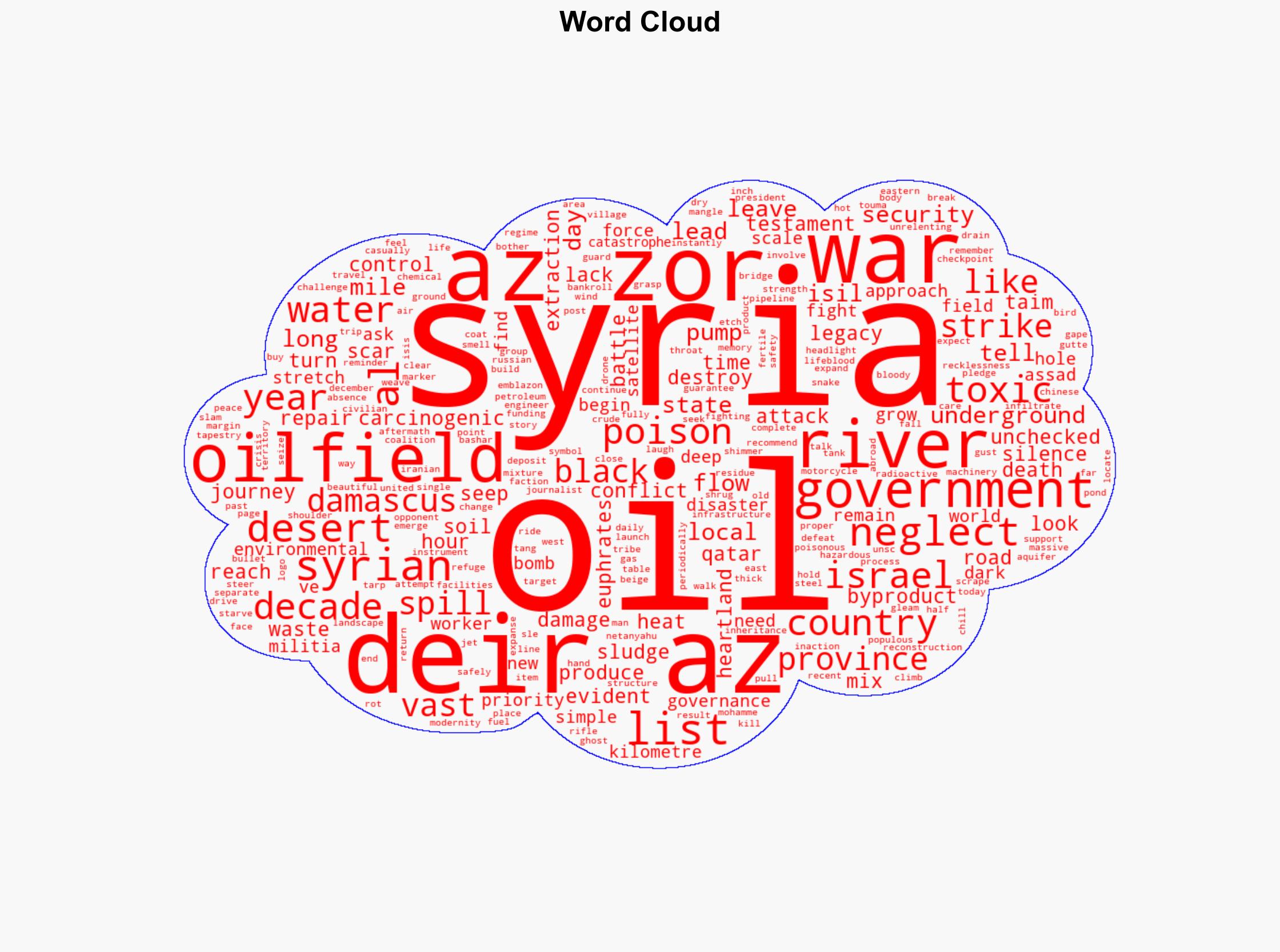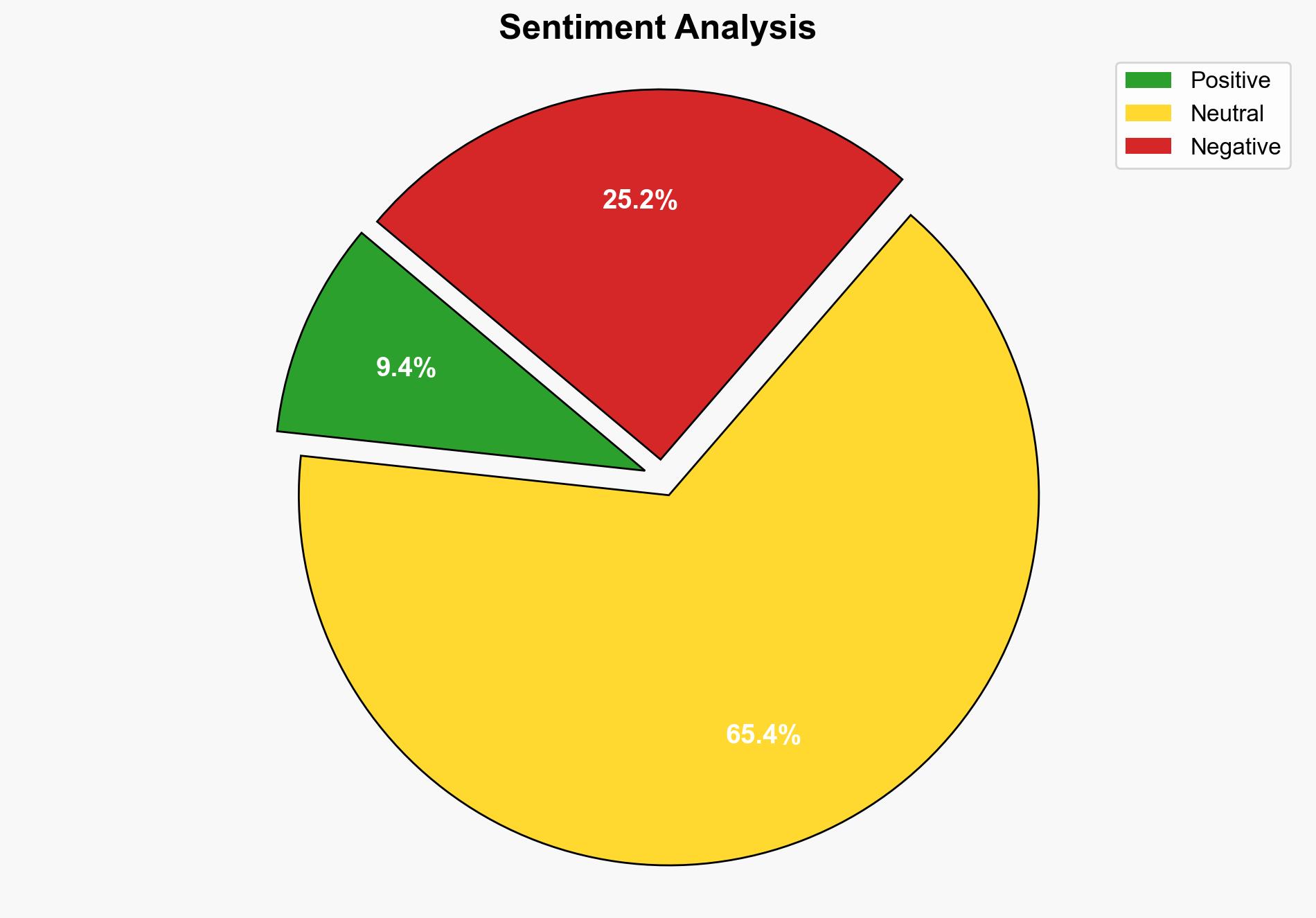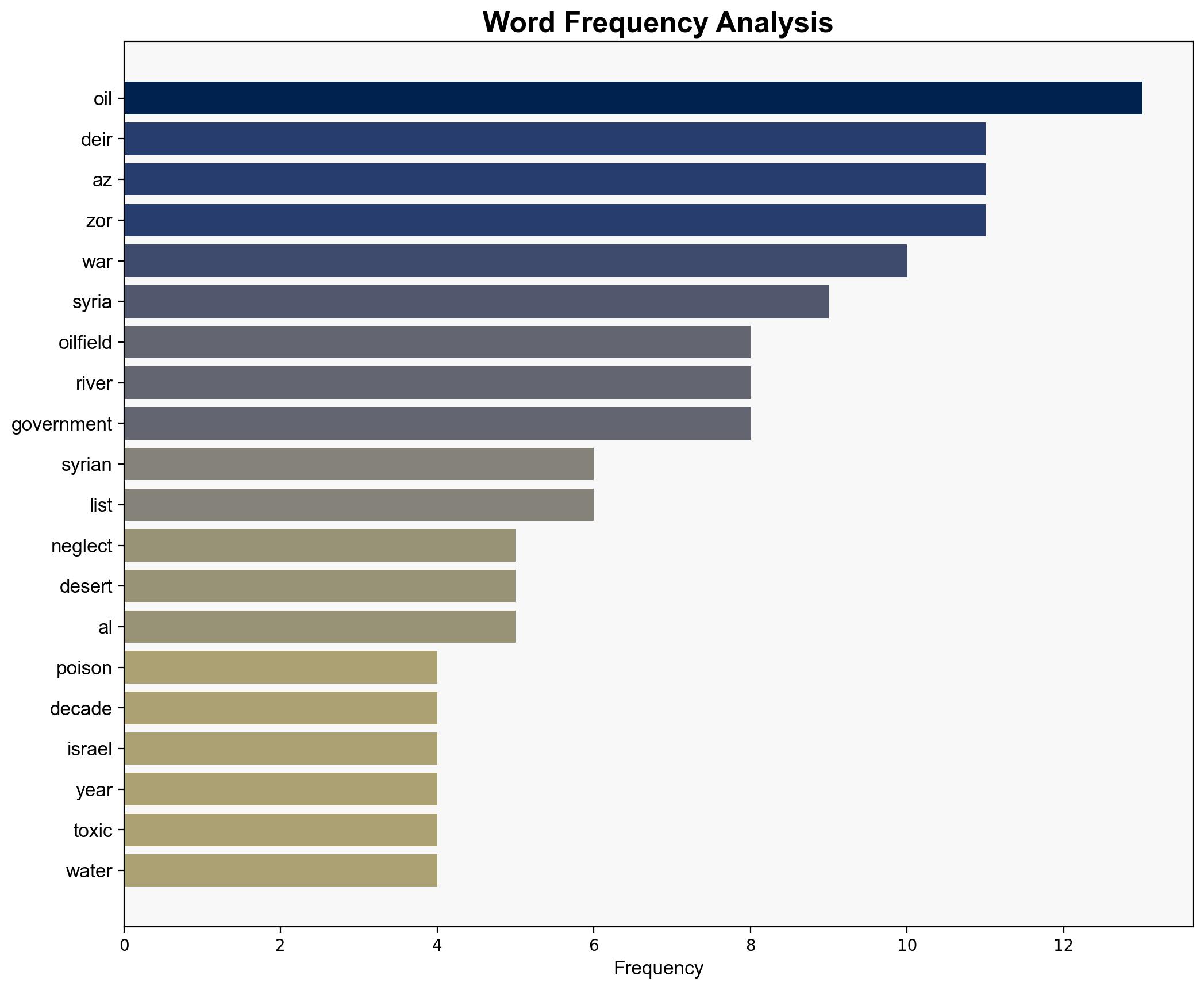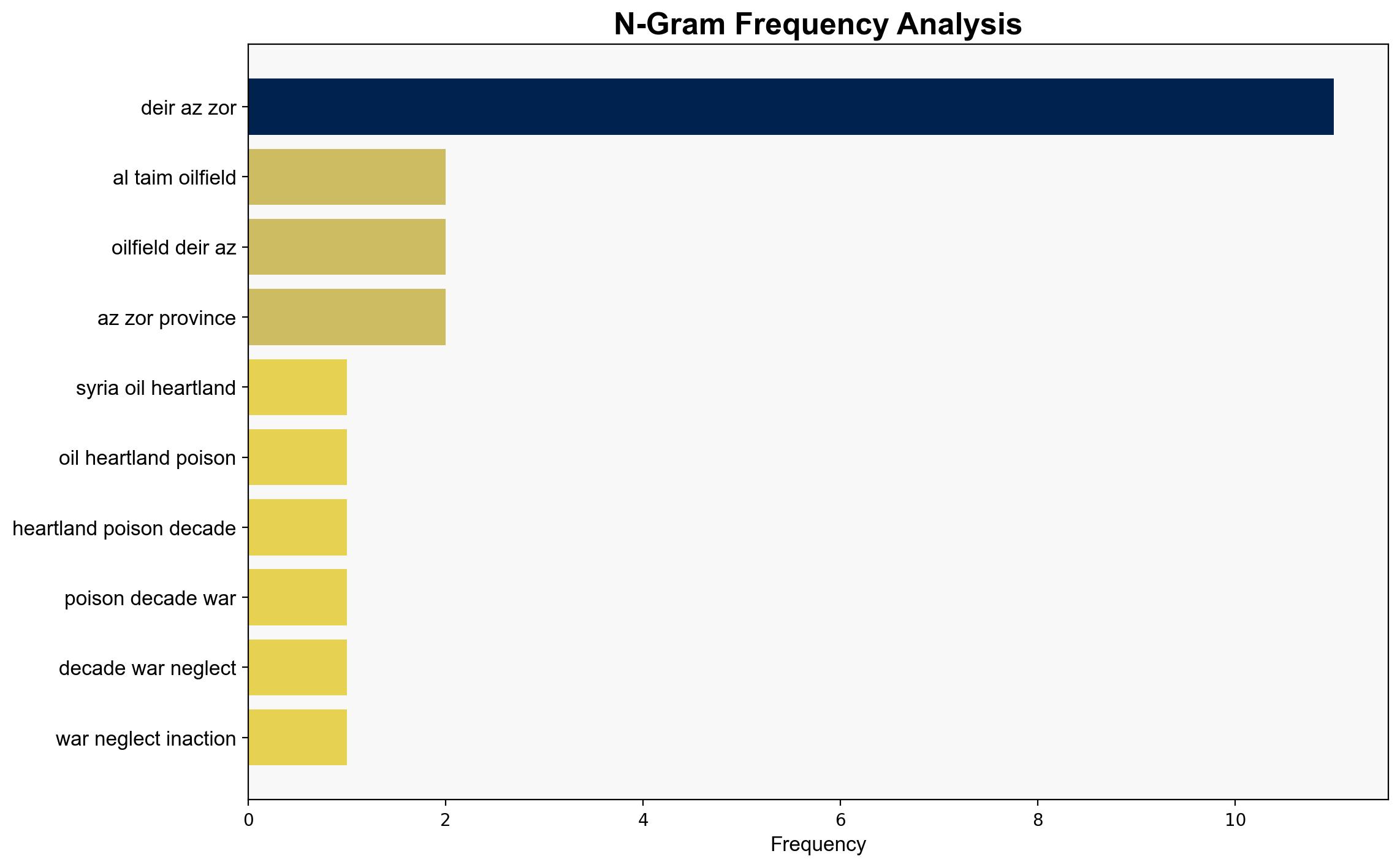Syrias oil heartland poisoned by decades of war neglect and inaction – Al Jazeera English
Published on: 2025-09-13
Intelligence Report: Syria’s oil heartland poisoned by decades of war neglect and inaction – Al Jazeera English
1. BLUF (Bottom Line Up Front)
The most supported hypothesis is that the environmental degradation in Syria’s oil heartland is primarily due to prolonged war-induced neglect and lack of governance. This has led to significant ecological and health risks, exacerbating regional instability. Confidence level: Moderate. Recommended action: International intervention to address environmental and governance issues, potentially through UN-led initiatives.
2. Competing Hypotheses
1. **Hypothesis A**: The environmental crisis in Deir az-Zor is primarily a result of prolonged conflict and neglect by the Syrian government, leading to infrastructure decay and uncontrolled oil spills.
2. **Hypothesis B**: The crisis is exacerbated by external military actions and interventions, including those by Israel and other foreign actors, which have targeted oil infrastructure, compounding the environmental damage.
Using the Analysis of Competing Hypotheses (ACH) 2.0, Hypothesis A is better supported by the evidence of long-term neglect and lack of governance, as indicated by the deterioration of infrastructure and absence of environmental safeguards. Hypothesis B, while plausible, lacks direct evidence linking external military actions as the primary cause of the environmental degradation.
3. Key Assumptions and Red Flags
– **Assumptions**: It is assumed that the Syrian government has the capacity but lacks the will to address the environmental issues. Another assumption is that external military actions are not the primary cause of the environmental crisis.
– **Red Flags**: Potential cognitive bias in underestimating the impact of foreign military actions. Lack of comprehensive data on the extent of environmental damage and its direct causes.
– **Deception Indicators**: Possible downplaying of foreign military impact by local sources to shift blame internally.
4. Implications and Strategic Risks
– **Environmental and Health Risks**: Continued environmental degradation could lead to severe health issues for local populations and further destabilize the region.
– **Geopolitical Risks**: The situation could be exploited by non-state actors to gain influence, potentially leading to renewed conflict.
– **Economic Risks**: The degradation of oil infrastructure may hinder Syria’s economic recovery and exacerbate poverty.
– **Cascading Threats**: Potential for regional water contamination affecting neighboring countries, leading to broader geopolitical tensions.
5. Recommendations and Outlook
- **Mitigation**: Advocate for international environmental assessments and remediation efforts in Deir az-Zor.
- **Governance**: Support initiatives to strengthen local governance and infrastructure rebuilding.
- **Best Case Scenario**: Successful international intervention leads to environmental recovery and improved regional stability.
- **Worst Case Scenario**: Continued neglect results in severe ecological collapse and increased conflict.
- **Most Likely Scenario**: Partial international intervention with limited success due to ongoing conflict and political complexities.
6. Key Individuals and Entities
– Bashar al-Assad
– Local militia leaders in Deir az-Zor
– ISIL remnants
– International actors involved in Syria (e.g., Israel, Russia, United States)
7. Thematic Tags
national security threats, environmental degradation, regional stability, governance challenges




